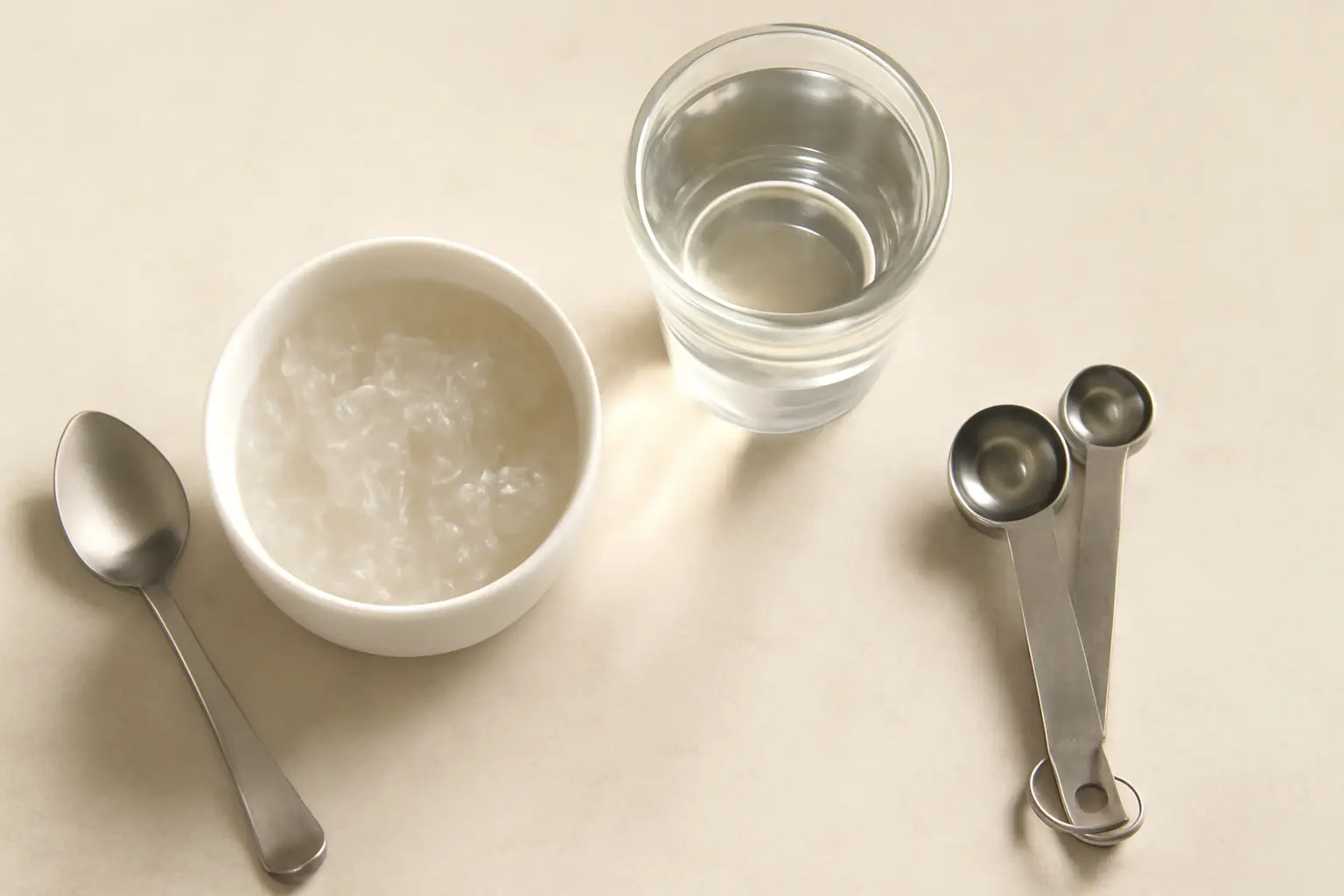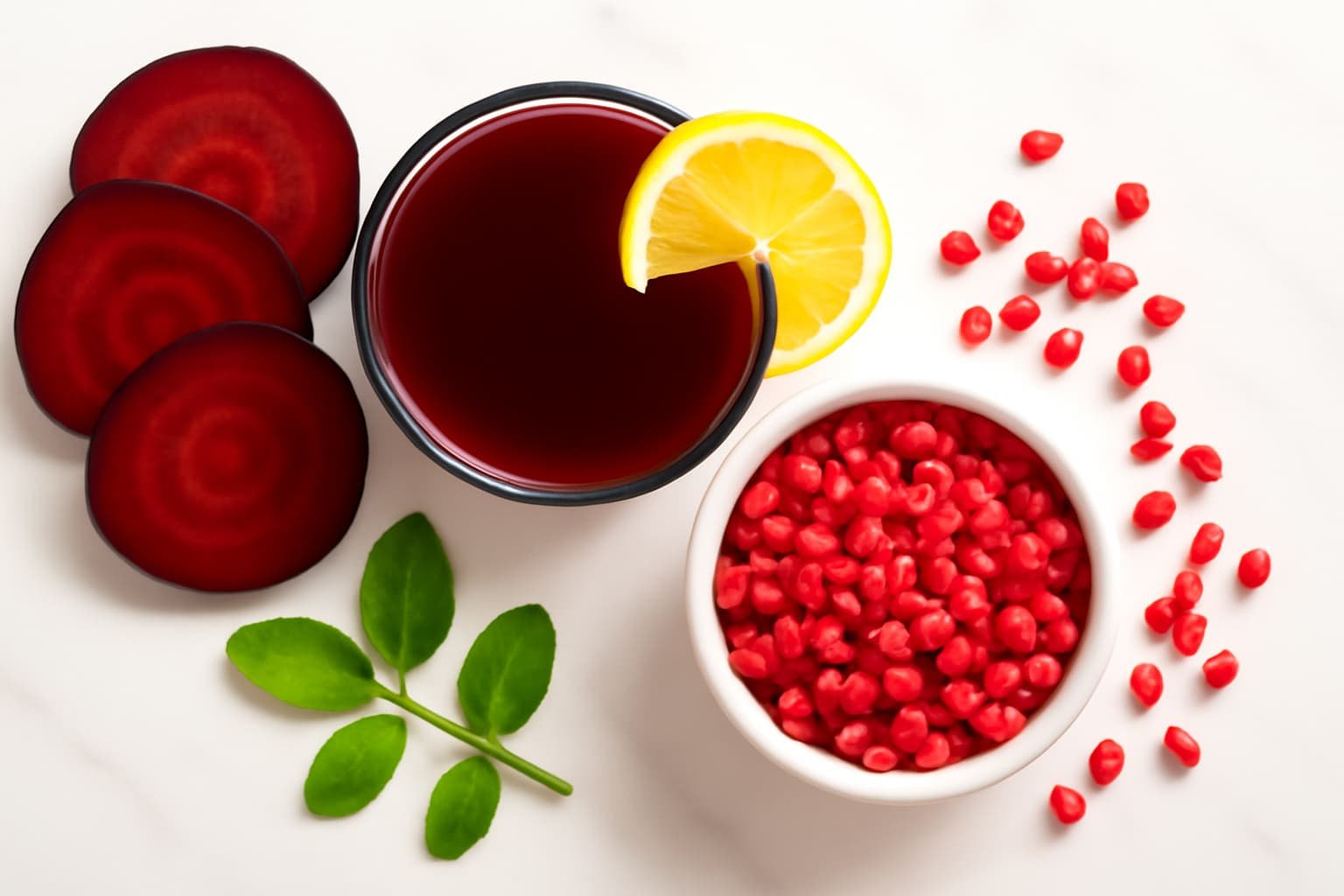Table of Contents
1. Steatosis Treatment: Symptoms and Natural Solutions
Introduction to Steatosis and Its Impact
Steatosis treatment is becoming increasingly important as the prevalence of fatty liver disease continues to rise globally. This condition, characterized by the accumulation of fat in liver cells, affects millions of people worldwide and can lead to serious health complications if left untreated. Recognizing steatosis symptoms early and implementing effective treatment strategies are crucial steps in maintaining liver health and preventing the progression of the disease.
Fatty liver, or hepatic steatosis, occurs when excess fat builds up in the liver, potentially impairing its function over time. This condition can be caused by various factors, including poor diet, sedentary lifestyle, excessive alcohol consumption, and certain medical conditions. As awareness of fatty liver disease grows, so does the need for accessible and effective treatment options for steatosis.
In recent years, there has been a shift towards exploring natural and holistic approaches to managing fatty liver disease. This blog post will delve into the world of steatosis treatment, exploring ten powerful natural solutions that can help manage steatosis symptoms and promote a healthier liver. We’ll examine the causes of fatty liver, discuss common symptoms to watch out for, and provide insights into why natural treatments may be an effective alternative to traditional medical interventions. By the end of this article, you’ll have a comprehensive understanding of steatosis and the tools needed to take control of your liver health naturally.
2. Understanding Steatosis: What Causes Fatty Liver?
Understanding steatosis is crucial for effective treatment and management of the condition. Steatosis, commonly known as fatty liver, occurs when fat accumulates in liver cells, potentially leading to inflammation and liver damage over time. There are two main types of fatty liver disease: alcoholic fatty liver disease (AFLD) and nonalcoholic fatty liver disease (NAFLD).
Alcoholic fatty liver disease is primarily caused by excessive alcohol consumption, which impairs the liver’s ability to break down and remove fat. On the other hand, nonalcoholic fatty liver disease is associated with factors such as obesity, insulin resistance, high blood sugar, and high levels of fats in the blood.
Common causes of fatty liver include:
1. Poor diet high in processed foods, sugar, and saturated fats
2. Sedentary lifestyle and lack of physical activity
3. Obesity or rapid weight loss
4. Insulin resistance and type 2 diabetes
5. Certain medications
6. Genetic factors
Early diagnosis of steatosis symptoms is crucial for implementing timely and effective treatment for liver steatosis. Without proper intervention, fatty liver can progress to more severe conditions such as nonalcoholic steatohepatitis (NASH), cirrhosis, or even liver failure. By recognizing the signs early and seeking appropriate fatty liver disease treatments, individuals can potentially reverse the condition and prevent long-term liver damage.
Steatosis treatment often begins with lifestyle modifications and may include dietary changes, increased physical activity, and weight management. In some cases, medical interventions may be necessary to address underlying conditions contributing to fatty liver. Understanding the causes and risk factors associated with steatosis is the first step towards developing an effective treatment plan and maintaining optimal liver health.
3. Recognizing Steatosis Symptoms: Early Warning Signs
Recognizing steatosis symptoms is crucial for early detection and timely treatment for liver steatosis. While fatty liver disease often develops silently, there are several warning signs that may indicate the presence of this condition. Being aware of these symptoms can help individuals seek appropriate medical attention and begin fatty liver therapy before the condition progresses.
Common steatosis symptoms include:
1. Fatigue and weakness: Persistent tiredness and lack of energy are often early signs of liver dysfunction.
2. Abdominal discomfort: A feeling of fullness or pain in the upper right part of the abdomen may indicate an enlarged liver.
3. Unexplained weight gain: Fatty liver can contribute to insulin resistance, leading to weight gain, especially around the midsection.
4. Elevated liver enzymes: Blood tests may reveal higher-than-normal levels of liver enzymes, such as ALT and AST.
5. Jaundice: In advanced cases, yellowing of the skin and eyes may occur due to the liver’s inability to process bilirubin effectively.
6. Nausea and loss of appetite: Some individuals may experience digestive discomfort and reduced hunger.
7. Swelling in the legs and ankles: Fluid retention can occur as the liver’s function deteriorates.
8. Enlarged spleen: In some cases, the spleen may become enlarged, causing discomfort on the left side of the abdomen.
9. Spider-like blood vessels: Visible, spider-shaped blood vessels may appear on the skin, particularly on the chest and back.
10. Mental confusion: In severe cases, toxin buildup in the blood can lead to cognitive issues and confusion.
It’s important to note that many people with fatty liver disease may not experience noticeable symptoms, especially in the early stages. This is why regular check-ups and liver function tests are essential, particularly for those at higher risk of developing the condition.
Identifying these steatosis symptoms early allows for prompt initiation of steatosis treatment, which can help prevent further liver damage and potentially reverse the condition. If you experience any of these symptoms or have concerns about your liver health, it’s crucial to consult with a healthcare professional for proper evaluation and guidance on appropriate fatty liver therapy options.
4. Why Choose Natural Steatosis Treatment?
When it comes to addressing fatty liver disease, many individuals are turning to natural steatosis treatment options. These approaches offer several benefits over traditional pharmaceutical interventions and can be an effective way to manage steatosis symptoms while promoting overall liver health.
Here are some key reasons why choosing natural remedies for fatty liver treatment may be advantageous:
1. Minimal side effects: Natural treatments typically have fewer adverse effects compared to prescription medications, making them a safer long-term option for many patients.
2. Holistic approach: Natural remedies often address the root causes of fatty liver disease, such as poor diet and lifestyle habits, rather than simply masking symptoms.
3. Cost-effective: Many natural treatments are more affordable than prescription drugs, making them accessible to a wider range of individuals.
4. Complementary to conventional treatments: Natural remedies can often be used alongside traditional medical interventions, enhancing overall treatment efficacy.
5. Promotes overall health: Many natural fatty liver disease treatments also benefit other aspects of health, such as improving cardiovascular function and supporting weight management.
6. Sustainable long-term solution: By focusing on lifestyle changes and natural remedies, individuals can develop habits that support liver health for years to come.
7. Empowers patients: Natural treatments often require active participation from patients, encouraging them to take control of their health and make positive changes.
Opting for natural steatosis treatment doesn’t mean abandoning conventional medical care. It’s essential to work with healthcare professionals to develop a comprehensive treatment plan that may include both natural and medical interventions. By taking a holistic approach to managing steatosis symptoms, individuals can address the underlying causes of fatty liver disease while supporting overall liver function and health.
5. 10 Powerful Natural Solutions for Steatosis Treatment

Fatty Liver Disease Stock photos by Vecteezy
1. Diet Modification
One of the most crucial aspects of steatosis treatment is adopting a liver-friendly diet. Proper nutrition plays a vital role in managing steatosis symptoms and can be an effective form of fatty liver therapy. By making strategic dietary changes, individuals can reduce fat accumulation in the liver and support overall liver health.
Key dietary modifications for fatty liver treatment include:
1. Increase intake of antioxidant-rich foods: Fruits and vegetables high in antioxidants, such as berries, leafy greens, and citrus fruits, can help combat oxidative stress in the liver.
2. Choose healthy fats: Replace saturated and trans fats with healthy options like olive oil, avocados, and fatty fish rich in omega-3 fatty acids.
3. Limit added sugars and refined carbohydrates: These foods can contribute to insulin resistance and fat accumulation in the liver.
4. Incorporate fiber-rich foods: Whole grains, legumes, and vegetables high in fiber can help improve digestion and support liver function.
5. Stay hydrated: Drinking plenty of water helps flush toxins from the liver and supports overall health.
By adopting these dietary changes as part of a comprehensive treatment for liver steatosis, individuals can significantly improve their liver health and potentially reverse fatty liver disease. It’s important to work with a healthcare professional or registered dietitian to develop a personalized nutrition plan that addresses individual needs and supports effective fatty liver therapy.
2. Regular Exercise

Regular exercise plays a crucial role in the treatment for liver steatosis by reducing liver fat and improving overall liver function. Incorporating physical activity into your daily routine is one of the most effective fatty liver disease treatments available. Aim for at least 150 minutes of moderate-intensity aerobic exercise or 75 minutes of vigorous-intensity exercise per week.
Exercise helps in the treatment for liver steatosis by:
1. Increasing insulin sensitivity
2. Promoting weight loss
3. Reducing inflammation
4. Improving liver enzyme levels
Various forms of exercise can be beneficial for fatty liver therapy, including:
1. Brisk walking
2. Cycling
3. Swimming
4. Strength training
Combining aerobic exercises with resistance training can yield even better results. Regular physical activity not only aids in the treatment for liver steatosis but also improves overall health, reducing the risk of related conditions such as type 2 diabetes and cardiovascular disease. Consult with your healthcare provider to develop an exercise plan tailored to your specific needs and fitness level.
3. Herbal Supplements
Herbal supplements have shown promise as natural treatments for steatosis, offering potential benefits in managing steatosis symptoms. Two herbs that stand out for the treatment for liver steatosis are milk thistle and dandelion root.
Milk thistle contains silymarin, a powerful antioxidant that helps protect liver cells from damage and promotes liver regeneration. It may also reduce inflammation and improve insulin resistance, making it an effective component of fatty liver treatment.
Dandelion root is known for its liver-protective properties and ability to stimulate bile production, which aids in fat metabolism. This herb can help alleviate steatosis symptoms by supporting liver detoxification and reducing fat accumulation in liver cells.
Other beneficial herbs for the treatment for liver steatosis include:
1. Turmeric
2. Ginger
3. Artichoke leaf
When incorporating herbal supplements into your steatosis treatment plan, it’s essential to consult with a healthcare professional to ensure proper dosage and avoid potential interactions with medications. These natural remedies can complement other fatty liver disease treatments and contribute to overall liver health.
4. Omega-3 Fatty Acids
Omega-3 fatty acids play a significant role in natural fatty liver treatment strategies. These essential fats, found in fish oil, flaxseed, and chia seeds, offer numerous benefits for liver health and can be an effective component of the treatment of liver steatosis.
The anti-inflammatory properties of omega-3s help reduce liver inflammation, a key factor in fatty liver disease progression. Additionally, these fatty acids can improve insulin sensitivity and decrease triglyceride levels, both of which contribute to liver fat accumulation.
Incorporating omega-3 fatty acids into your fatty liver therapy plan can be done through:
1. Consuming fatty fish like salmon, mackerel, and sardines
2. Taking fish oil supplements
3. Adding plant-based sources like flaxseed and walnuts to your diet
Studies have shown that omega-3 supplementation can lead to significant improvements in liver fat content and liver enzyme levels. When combined with other lifestyle changes, omega-3 fatty acids can be a powerful tool in managing and potentially reversing fatty liver disease.
5. Green Tea Extract
Green tea extract has emerged as a promising natural remedy for steatosis treatment. Rich in catechins, particularly epigallocatechin gallate (EGCG), green tea offers potent antioxidant and anti-inflammatory properties that benefit liver health. As a fatty liver therapy, green tea extract can help:
1. Reduce liver fat accumulation
2. Improve liver enzyme levels
3. Enhance insulin sensitivity
4. Protect liver cells from oxidative stress
Regular consumption of green tea or supplementation with green tea extract can complement other lifestyle changes in managing fatty liver disease. However, it’s essential to consult with a healthcare professional before adding green tea extract to your treatment plan, especially if you have any pre-existing conditions.
6. Coffee Consumption

Moderate coffee consumption has shown promising results in steatosis treatment. Studies suggest that regular coffee intake can help reduce the severity of steatosis symptoms and potentially slow the progression of fatty liver disease. The benefits of coffee for liver health include:
1. Reduced liver enzyme levels
2. Decreased liver inflammation
3. Lower risk of liver fibrosis
These effects are attributed to coffee’s high antioxidant content and its ability to improve insulin sensitivity. While coffee can be a beneficial addition to your treatment for liver steatosis, it’s important to consume it in moderation and avoid adding excessive sugar or cream, which could counteract its positive effects.
7. Probiotics and Prebiotics
The gut-liver axis plays a crucial role in managing steatosis symptoms, making probiotics and prebiotics valuable components of natural fatty liver disease treatments. By promoting a healthy balance of gut bacteria, probiotics can help regulate the immune response and reduce inflammation. In fact, they can help reduce inflammation throughout the body, improve gut barrier function and enhance metabolic health.
Incorporating probiotic-rich foods like yogurt, kefir, and sauerkraut, along with prebiotic sources such as garlic, onions, and bananas, can support a healthy gut microbiome. This, in turn, contributes to effective treatment for liver steatosis by promoting overall liver health and reducing the risk of fatty liver disease progression.
8. Vitamin E Supplementation
Vitamin E supplementation has shown promise as an effective fatty liver therapy, particularly for non-alcoholic fatty liver disease (NAFLD). This powerful antioxidant helps protect liver cells from oxidative stress and inflammation, key factors in steatosis treatment. Benefits of Vitamin E for liver health include:
1. Reduced liver fat accumulation
2. Improved liver enzyme levels
3. Decreased liver inflammation
While Vitamin E can be found in foods like nuts, seeds, and vegetable oils, supplementation may be necessary to achieve therapeutic levels for steatosis treatment. Always consult with a healthcare professional before starting any supplement regimen to ensure proper dosage and avoid potential interactions with other medications.
9. Reducing Alcohol Consumption
Limiting alcohol intake is crucial for managing steatosis symptoms and is a cornerstone of effective steatosis treatment. Excessive alcohol consumption can lead to alcoholic fatty liver disease and exacerbate non-alcoholic fatty liver disease. To support liver health and promote recovery, consider the following guidelines:
1. For those with alcoholic fatty liver disease, complete abstinence is recommended.
2. Individuals with non-alcoholic fatty liver should limit alcohol consumption to no more than one drink per day for women and two for men.
Reducing or eliminating alcohol intake can significantly improve liver function and aid in fatty liver treatment. Benefits include:
1. Decreased liver inflammation
2. Reduced fat accumulation in liver cells
3. Improved liver enzyme levels
4. Enhanced overall liver health
Steatosis treatment plans should always include strategies for managing alcohol consumption. Support groups, counseling, and lifestyle changes can help individuals reduce their alcohol intake and support their liver health journey. Remember, even moderate drinking can impact liver function, so minimizing alcohol consumption is crucial for effective steatosis treatment.
10. Stress Management Techniques
Effective stress management is a crucial component of steatosis treatment. Chronic stress can exacerbate steatosis symptoms and hinder liver health. Incorporating stress-reduction techniques into your daily routine can significantly improve your overall well-being and support liver function. Some beneficial practices include:
1. Meditation and mindfulness
2. Deep breathing exercises
3. Yoga or tai chi
4. Regular physical activity
5. Adequate sleep
These techniques help reduce cortisol levels, which can contribute to fat accumulation in the liver. By managing stress effectively, you can enhance the efficacy of other natural treatments for steatosis and promote a healthier liver environment. Remember, a holistic approach to steatosis treatment includes addressing both physical and emotional aspects of health.
6. When to Consult a Doctor for Steatosis Treatment
While natural remedies can be effective for steatosis treatment, it’s crucial to know when professional medical intervention is necessary. If steatosis symptoms persist or worsen despite lifestyle changes and natural treatments, it’s time to consult a healthcare provider. Some signs that indicate the need for professional help include:
1. Persistent fatigue or weakness
2. Unexplained weight loss
3. Abdominal pain or swelling
4. Yellowing of the skin or eyes (jaundice)
5. Dark urine or pale stools
A doctor can provide a comprehensive evaluation and recommend appropriate fatty liver disease treatments tailored to your specific condition. They may suggest additional tests, medications, or specialized therapies to complement your natural steatosis treatment plan.
7. Conclusion: Embracing Natural Remedies for Effective Steatosis Treatment
Incorporating natural remedies into your daily routine can significantly improve steatosis symptoms and overall liver health. From dietary changes and exercise to herbal supplements and stress management, these holistic approaches offer a comprehensive steatosis treatment plan. By embracing these natural solutions, you can take control of your liver health and potentially reverse the effects of fatty liver disease. Remember, consistency is key in managing steatosis symptoms effectively. Always consult with a healthcare professional before starting any new treatment regimen. With dedication and the right combination of natural remedies, you can work towards a healthier liver and a better quality of life.





